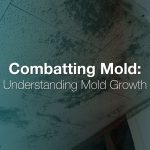Do you know what’s in the air that you’re breathing? Sasser Restoration not only brings your buildings back to life after a natural disaster, but our team also ensures that your home or office is safe and ready to be occupied once again. Whether that’s by bringing in a third-party hygienist to ensure that there is no microbial growth or by purifying the air you breathe with an air scrubber, our teams go the extra mile for you.
If you aren’t sure what an air scrubber is or how it can improve the indoor air quality in your home or office, we have answered some of the most frequently asked questions regarding air scrubbers for you.
What is an air scrubber?
An air scrubber is a portable filtration system that draws in air from the surrounding environment and passes it through a series of filters. These filters efficiently remove particles from the air to help improve indoor air quality.
What is the difference between an air scrubber and a negative air machine?
An air scrubber stands alone in the center of a room without any ducting attached. The air it filters is recirculated to the surrounding area. An air scrubber application helps improve the general air quality of the job site.
A negative air machine uses ducting to remove contaminated air from a sealed containment area. The filtered air is exhausted outside of the containment. This creates negative air pressure (a slight vacuum effect) inside the containment relative to surrounding areas. A negative air machine application helps limit the spread of contaminants to other areas inside the structure.
Why should I use an air scrubber?
There are four primary reasons why you should use an air scrubber. The first is for your occupants. An air scrubber helps create a cleaner, safer indoor environment for occupants both during the restoration work and after it is done. Using an air scrubber on a job is a cost-effective way to increase the quality and value of the service you offer to your customers.
The second reason you should use an air scrubber is for your technicians. Using an air scrubber on the job also reduces the risk for those working on the job. In many cases, an air scrubber may be much more effective, comfortable, and less expensive than requiring the use of respirators. An air scrubber is a short-term and long-term investment in the health and productivity of the people who do the work of restoration.
Thirdly, you should use an air scrubber for legal implications. An air scrubber not only addresses indoor air quality concerns while the work is being performed, but it can also help limit your legal exposure long after the job is done. By using an air scrubber on every job, you are taking an extra step to minimize unintended liability and complications that affect indoor air quality and occupant health.
Finally, you should use an air scrubber to increase safety and productivity. Improving indoor air quality also benefits equipment performance and quality of work. An air scrubber helps keep your equipment clean so that it can perform at its best.
When should I use an air scrubber?
You should use an air scrubber for water damage mitigation. One of the most practical and necessary places to use an air scrubber is on every water damage restoration job. The immense amount of airflow necessary for the evaporation of moisture from carpet, pad, drywall and other damaged materials also stirs up a vast amount of debris into the air from carpet, furniture, and ductwork.
A second instance when an air scrubber should be used is for fire damage restoration. You use an air scrubber on fire damage to not only reduce particle counts but to reduce odors.
An air scrubber can also be used to help with dust control. An air scrubber is a valuable tool in any environment where dust is undesirable for reasons of safety, comfort, or precision. Situations may include workshops, construction sites, or factory production lines.
Air scrubbers are also used for odor control. With an optional carbon filter placed in the pre-filter stage, an air scrubber can remove odor-causing gas molecules from the air in addition to microscopic particles. Applications include cleanup for fire, sewage, mold contamination, and even standard carpet cleaning jobs.
Finally, air scrubbers should be used for sewage remediation. Use an air scrubber with an optional carbon filter to help control odor and reduce the number of gaseous pollutants while remediating sewage damage.
How Sasser Restoration Can Help
Make sure you take care of your indoor air quality and call the team at Sasser Restoration for all of your air scrubbing needs!



